#the invasion of time
Text


"I am Commander Stor..."
The Invasion of Time - season 16 - 1978
#doctor who#classic doctor who#fourth doctor#tom baker#the invasion of time#commander stor#derek deadman
231 notes
·
View notes
Text
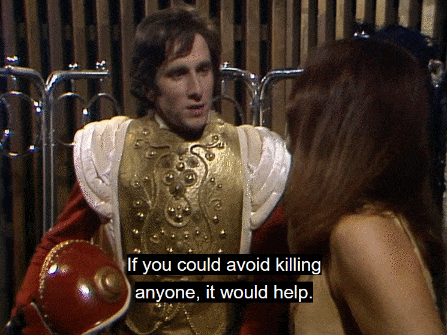
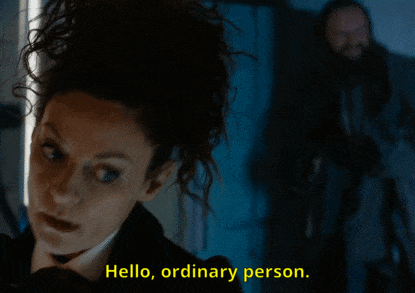
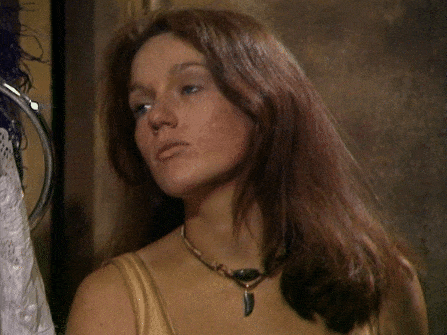
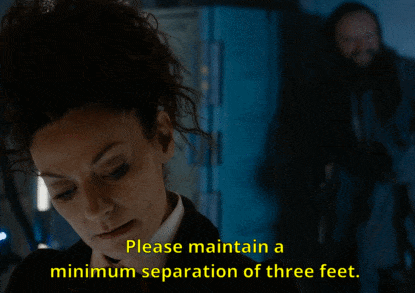
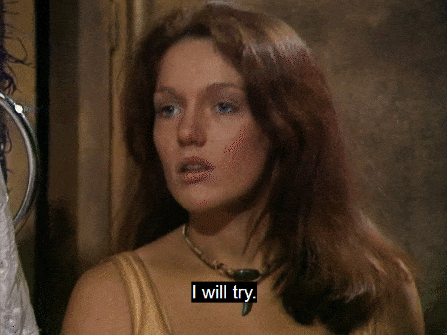
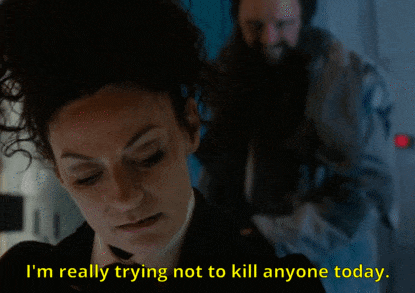
Girl problems.
Classic Doctor Who S15E21, "The Invasion of Time" Part 1
New Doctor Who S10E11, "World Enough and Time"
#doctor who#leela of the sevateem#gomez!master#missy#the invasion of time#world enough and time#gifs
88 notes
·
View notes
Text
The Killer Cats of Gin-Seng
In Survival, the last regular serial of Classic Doctor Who, the Doctor and Ace visit a planet of humanoid cats called “Cheetah People”. The Cheetah People are highly telepathic: they can mentally control and inhabit their pet cats, and they can even teleport between planets. Most notably, one of them is played by Lisa Barrowman, better known as Bernice Summerfield.
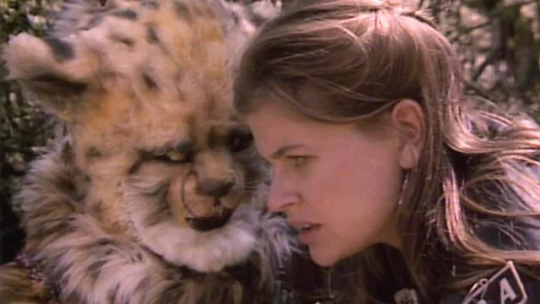
But this wasn’t actually the first time that humanoid cats had been set to appear in Doctor Who. In 1977, script editor Anthony Read commissioned his former collaborator David Weir to write the Season 15 finale, a four-part serial set on Gallifrey. The request was to explore society outside the Capitol with an emphasis on morality, a theme which Weir had written well in the past. So he pitched a story about Gallifreyan civilization of humanoid cats.
The Gallifreyan cat-people would have mirrored real-world cats’ dual penchant for both sophistication and savagery: they would appear advanced and civilized until the Doctor wound up in one of their elaborate gladiatorial displays! Weir delivered his scripts on time, and production proceeded to the point that Dee Robson designed costumes for the cat actors.

Ultimately the story was cancelled: Weir, by all accounts an excellent screenwriter, dramatically overestimated the show’s VFX capabilities and budget. But executive producer Graham Williams later mentioned the idea at a fan convention, so it became well-known in fandom (albeit under the false name The Killer Cats of Geng Singh). As a result, when Survival finally brought cat people to screens, fans naturally canonwelded the two.
One of these fans was Adrian Middleton, editor of the Apocrypha fanzine. Here’s how Apocrypha issue 1 covered the cats:
Apocrypha on the Killer Cats
THE GIANT CATS -16,000,000
The first intelligent mammalians on Gallifrey evolved from its version of the sabre-toothed Tiger. These giant cats developed a rudimentary form of empathic communication, which allowed them to influence the actions of their prey.
Over an extended period of time, the cats developed a finer telepathic ability, allowing them to actually control other species. This became a necessity as feline culture grew, as their physiological form prevented the use of tools to build or write with. Thus, in spite of their intelligence, the cats could not establish a true civilisation without anthropoid assistance.
FELINOID CIVILISATION -14,000,000
Early Gallifreyan hominids soon became the tools of feline culture. The first buildings on the planet were built by hominids but designed by cats, taking the form of vast stone arenas, in which the cats would use lesser species for sport - hunting and killing for pleasure rather than survival.
HOMINIDS -14,000,000/-13,980,000
Forced to live alongside saurian and feline predators, Gallifrey's first hominid tribes evolved as creatures of guile and stealth. Communities were established using primitive communications. These hominids were the cave-people, the tree-people, and the river-people.
THE FALL OF THE GIANT CATS -13,980,000
The hominid tribes had at first been easy prey for the cats, easily manipulated as a supply of muscle and food. Ultimately, however, the development of feline culture accelerated the development of hominid culture. Being made to use their hands and having the telepathic parts of their minds manipulated awakened a new sense of purpose within them. Seeing the cats as their slavers, they rebelled, exposing the cats to a coup so bloody that the species was all but wiped from the face of the planet.
THE LEGEND OF THE VANISHING CATS -13,800,000
It is rumoured that, after their defeat by the hominids, the giant cats fled to the mountains, where they hoped to restore their numbers (perhaps in an effort to restore their power over the hominids). Often hunting parties would venture into these mountains, bringing back the occasional cat. It seemed that the mental strength of the hominids had come to match their feline contemporaries.
Other psychic powers were attributed to the cats, including the power of teleportation. In Gallifrey's southern hemisphere, atop one of its highest mountains, there stands a crudely erected stone circle. Gallifreyan archaeologists determined that this was built by the cats themselves. Legend states that the giant cats emigrated by mass teleportation to another worlds. Few giant cats were seen from this time on, and those that did appear bore no telepathic powers. However, smaller domestic cats, or Kitlings, retained this ability.
WHY LINK THE KITLINGS FROM 'SURVIVAL' WITH THE KILLER CATS OF GALLIFREY?
The 'cat' theme is one that has been expanded on greatly in recent years. Colin Baker's cat motif and 'I am the cat that walks alone' slogan, followed by Eric Saward's novelisation of 'Slipback', set a pace followed by 'Survival' and the 'Cat's Cradle' trilogy.
Upon learning about 'The Killer Cats of Ginseng' by David Weir, everything seemed to fit into place. Cats can't exist everywhere in the universe, they have to come from somewhere - we have Earth cats, and Gallifrey has telepathic or empathic cats, just like the Kitlings.
Commentary
Since the 90s, a few stories have referenced the killer cats idea. Gary Russell’s VMA Invasion of the Cat-People mentions “mercenaries of Gin-Seng” alongside the Cheetah People in a list of felinoid species (hence the “canonical” spelling); there’s a similar offhand mention in Big Finish’s Erasure. But there’s only been one actual appearance of one of the cats: Daniel O’Mahony’s Faction Paradox short story “The Return of the King” (pdf).
“The Return of the King” is a prelude to the author’s 2008 novel Newtons Sleep. In that book there’s a glimpse of “the nocturnal delegations of the wild things, whose sharp bright teeth and claws gleamed in the dark of their robes.” The prelude elaborates,
[Time Lord Thessalia’s] oracle stays at the window, seething playfully below his hood. He has fiercely intelligent eyes, neither as sharp nor as bright as his scar. His mouth is a succulent white smile in a lightless face. His people have nothing but contempt for the rituals of the Great Houses. She’s little better than prey to him, a bloodless snack for his long teeth and hungry mind. He breathes, honeyed air purring out of the cavities of his body.
A killer cat kept as a Time Lord’s personal oracle … as @rassilon-imprimatur once noted, a funny recontextualization of The Mark of the Rani’s reference to the Lord President’s “pet cat”!
This was my first exposure to the killer cats, so I always took it for granted that they’d always had psychic or oracular abilities. But in fact, as best as I can tell, there was zero hint of this in the original serial. I tracked down every published description of the story, and they all amount to the same few repeated bits of information: Gallifrey, humanoid cats, and a gladiatorial arena. Richard Bignell ultimately told me, “No summary of Killers of the Dark exists. Even David Weir couldn’t recall anything about it when I spoke to him.”
So when “The Return of the King” features an oracular cat-man, it’s not just a reference to the unmade Classic serial. It’s a reference to fan interpretations like Middleton’s which canonweld that serial with the psychic Cheetah People.
And in some ways, it seems to be referencing Middleton’s version specifically! In “The Return of the King”, the above quoted memory is interrupted by commentary:
Your first oracle?
‘My last.’
You think? But his kind were vanishing from the world.
‘They were escaping the War. They could see it coming.’
Compare:
Legend states that the giant cats emigrated by mass teleportation to another worlds. Few giant cats were seen from this time on, and those that did appear bore no telepathic powers.
And so Middleton explains how the cats vanished in O’Mahony’s telling, and O’Mahony explains why they vanished.
Afterword
While we’re on the topic of why, why did O’Mahony choose to revive this specific idea in “The Return of the King”?
One of the places I checked for Killers of the Dark details was issue 336 of Doctor Who Magazine. Imagine how thrilled I was to find that the relevant “Accidental Tourist” piece, located one page after a Faction Paradox ad, was written by none other than O’Mahony himself!
Part of his reflection was particularly striking. He recaps the wild undefinedness of the Doctor’s backstory, a topic I’ve discussed before on this blog. But in his telling, the uncertainty extends past The War Games all the way to The Deadly Assassin.
After all, The War Games declared that “the Doctor’s people are the Time Lords”, but “who are the Time Lords?” was still left undefined. In the Time Lords’ many subsequent appearances, they were simply walking plot devices, and lore details were left to the wayside. Contradictions were rife. Who was Rassilon to Omega? Is their planet called “Gallifrey” or “Jewel”? Who or what on earth are the “First”, “Second”, and “Third Time Lord” who exiled the Doctor?
It was The Deadly Assassin which first dove into the details by featuring the Time Lords like they were any other of the show’s alien cultures. And for this, it was widely panned: “the fans had voted it the worst story of Season Fourteen and published reviews vociferously attacking its ‘betrayal’ of the Time Lords. The BBC practically disowned it, physically vandalising the master tape to placate Mary Whitehouse.” In other words, the stage was all set for a discarding of Holmes’ Time Lords.
O’Mahony writes in his conclusion,
The Deadly Assassin could have remained a one-off, its vision of the Doctor’s homeworld set at odds not just with the Gallifrey stories of the past but also those of the future. The Killer Cats of Geng Singh was the last chance to slip the leash. Williams loved the Time Lords but he had a raft of other ideas he could have put into play, not least the frustratingly deferred Guardians who were clearly intended as a new rung of the series cosmology above and beyond the Time Lords. The premise of Killer Cats was also to counterpoint the Time Lords with another Gallifreyan species – a race of humanoid cats that delighted in bloodthirsty gladiatorial contests alongside a highly refined culture. This wasn’t cribbing from The Deadly Assassin, this was building something new that would expand the newly-forged mythology of the series. In fact, with the cat-people on board and the Guardians waiting in the wings, the possibilities for Time Lord mythology were fluid. It might be possible to return to Gallifrey and find something new and exciting each time, different Gallifreys, with a mutable and ever-expanding history.
However, thanks to Killers of the Dark’s cancellation, Williams and Read were left with a slot to fill on short notice, and for The Invasion of Time they ultimately turned back to Holmes’ ideas. The Deadly Assassin wasn’t discarded or undermined, it was reentrenched.
This was the real moment that the Time Lords as we know them were crystallized: a real-world anchoring of the thread. This was when the whimsically-named planet “Gallifrey” definitively transformed into the rationalistic, stagnant, bureaucratic Homeworld that would feature in the Faction Paradox series.
Because in FP, by the time Grandfather Paradox enters the scene, the Great Houses are total strangers to whismy. It’s only through the course of the War that their understanding of the cosmos is broadened and stranger things begin to return to the Homeworld (with great vengeance).
By showing us a cat in the flesh, O’Mahony is finishing the housekeeping: just as the Intuitive Revelation banished the Pythia, the Eremites, and the Carnival Queen; just as the Grey Eminence unwrote Gallifrey’s first childbirth; and just as the Eternals “despaired of this reality, and fled their hallowed halls” at first hint of conflict – the Killer Cats have to leave to set the scene for the War to come.
P.S.
In Baker’s End, Tom Baker wound up “the King of Cats”. What does this imply about the Other?!?
#Doctor Who Apocrypha#the return of the king#daniel o'mahony#archival#effortpost#newtons sleep#60s who#for archival purposes#only#no copyright infringement intended#will remove upon request#baker's end#the deadly assassin#killer cats of gin-seng#the invasion of time#fourth doctor#survival#faction paradox
41 notes
·
View notes
Text
It’s cool when Classic Who addresses why our leads are running through the same stretch of interior again and again in a more serious fashion than a throwaway “All these corridors look the same”.
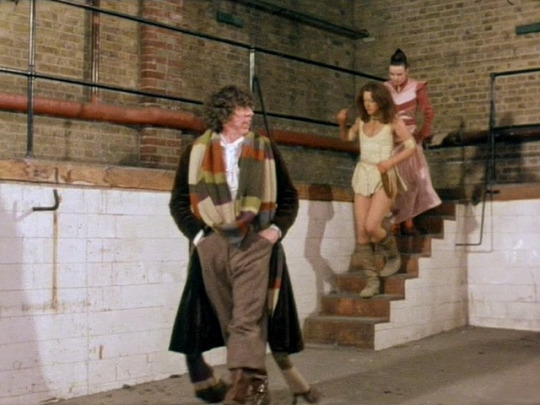

#doctor who#classic doctor who#classic who#castrovalva#the invasion of time#the fourth doctor#fourth doctor#the 4th doctor#4th doctor#5th doctor#fifth doctor#the fifth doctor#leela of the sevateem#leela doctor who#leela#tegan jovanka#nyssa of traken#adric#adric doctor who#adric of alzarius#nyssa#tegan
125 notes
·
View notes
Text
The fact that it takes nearly an hour of content for us to get any hint of what the fuck the Doctor is up to in Invasion of Time is astounding. In a good way, I think. I can't imagine modern Doctor Who letting the Doctor be an absolute raging asshole for ~55 minutes in any circumstance.
81 notes
·
View notes
Photo

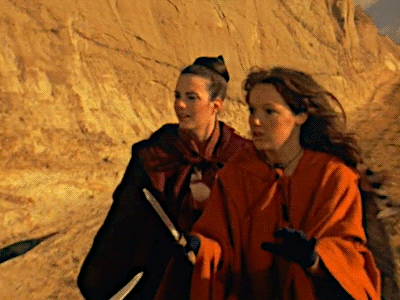
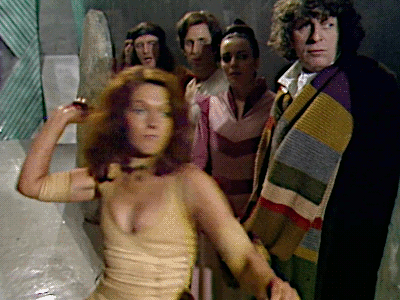
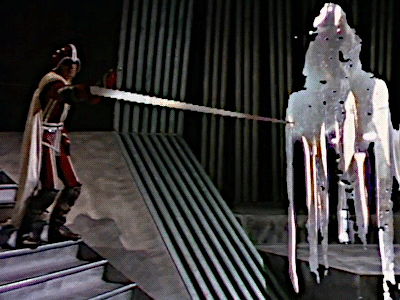


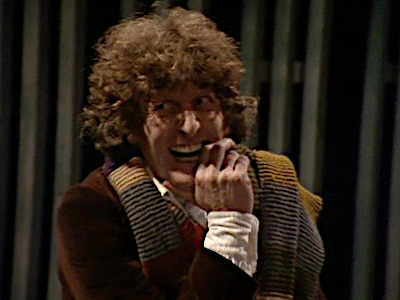
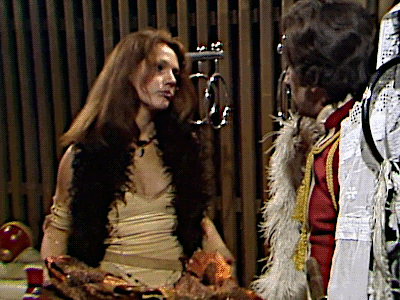


Every Doctor Who Story → The Invasion of Time
“By custom, with wisdom, and for honour, I shall strike three times. Should no voice be heard by the third stroke, I will, duty-bound, invest the candidate as President of the Supreme Council of the Time Lords of Gallifrey.”
175 notes
·
View notes
Text
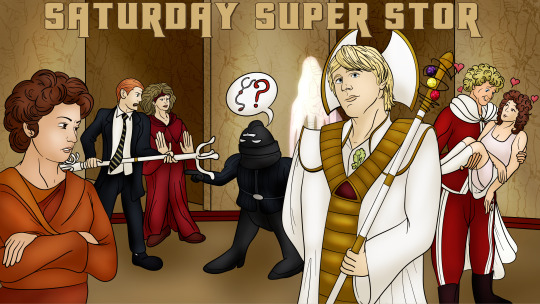
Time Ramvent Day 11: Saturday Super Stor
It's Peter Davison's 'The Invasion of Time', and the Doctor has finally lost it. He's returned to take up the mantle of the Gallifreyan Presidency, a plotline which hopefully can be woven in at some earlier point. Tegan's been expelled from the Capitol, Turlough's gone on the run, and Nyssa's fallen in love with Maxil Andred! At least the TARDIS scenes look a bit better, even if Gallifrey's come over all beige.
Alt. versions under the cut


#doctor who#time ram#art#fan art#my art#time ramvent#fifth doctor#peter davison#tegan jovanka#vislor turlough#nyssa of traken#sontaran#andred#maxil#colin baker AS andred#the invasion of time
20 notes
·
View notes
Text
K9 calling the TARDIS a very stupid machine has me dying rn
#k9#doctor who#classic who#4th doctor#it’s so fucking funny#speak/you are a very stupid machine#he’s so sassy#the invasion of time
10 notes
·
View notes
Text
The no humans on Gallifrey rule WAS made to be exploited.
Sorry Sarah Jane, you can’t go home with me. No humans on Gallifrey.
BUT
Leela: Not human.
Nyssa: Not human.
No no, Leela is with me, she's an alien.
6 notes
·
View notes
Text

Reblog/Like if The Invasion of Time is your favourite story
#doctor who#doctor who girlie#classic who#classic doctor who#fourth#fourth doctor#doctor who leela#leela of the sevateem#the invasion of time
2 notes
·
View notes
Text

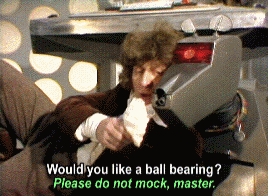
“Please do not mock, master.”
The Invasion of Time - season 16 - 1978
328 notes
·
View notes
Text

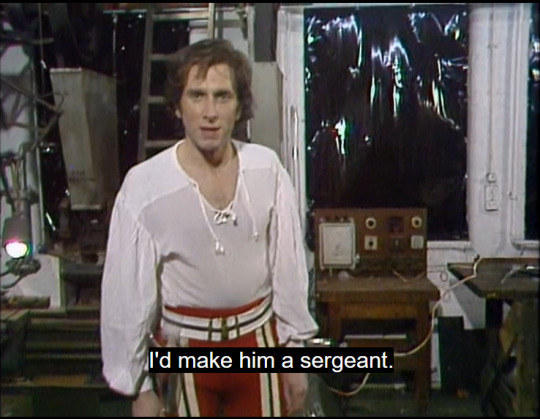
So there's a Sergeant K9 on Gallifrey now, yes?
32 notes
·
View notes
Text

Tom Baker As The Fourth Doctor in “Doctor Who - Invasion Of Time”
2 notes
·
View notes
Text
Gallifrey confuses me as a concept. Leela wanders half a mile outside the biggest city on the planet and is immediately beset by dudes with spears. Spears. What kind of economic system is this.
16 notes
·
View notes
Photo


moebius’s concept art for alejandro jodorowski’s film adaptation of dune, depicting duncan idaho and gurney halleck (1974) | andred, commander of the chancellery guard of gallifrey, in the doctor who serial the invasion of time (1978)
#doctor who#dune#duncan idaho#gurney halleck#andred#andredocelus#alejandro jodorowski#moebius#the invasion of time#sci-fi#character design#mine
15 notes
·
View notes
Photo

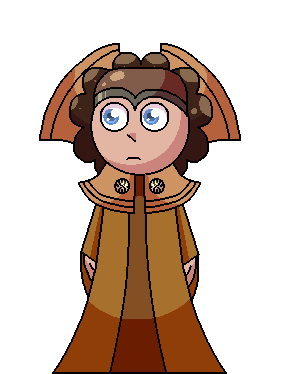
Fourth doctor pixeldolls who wear robes and the Matrix.
Curly Wurly Squirly Robes, if I say so myself.
Hope you like them!
#pixelart#pixeldolls#doctor who#the doctor#fourth doctor#tom baker#robes#(i swear president Doctor was wearing a nightgown)#crown#matrix#sash#rod#rassilon#president#prydonian#the invasion of time#the deadly assassin
9 notes
·
View notes